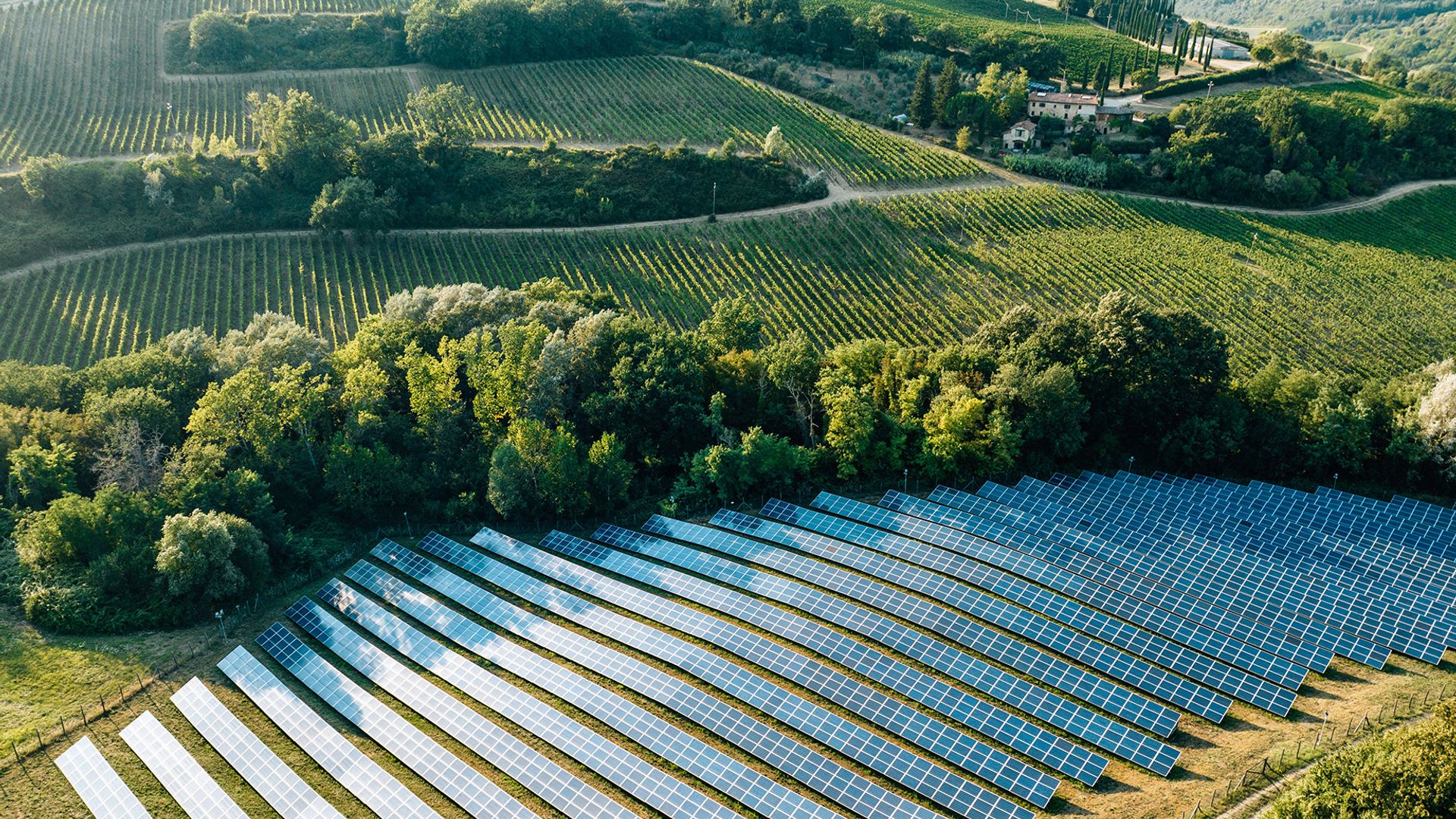
JACK ALYMER:
IN ITALY, FOOD IS A STAPLE OF THE NATION’S CULTURE.
BUT, TO SUPPORT THE FARMS THAT HELP MAKE THESE DISHES POSSIBLE, ITALIANS MAY HAVE TO PAY MORE ON THEIR ENERGY BILLS.
ROME IS ATTEMPTING TO PLACE NEW LIMITS ON THE INSTALLATION OF SOLAR PANELS IN AREAS CLASSIFIED AS AGRICULTURAL LAND.
A MOVE ENERGY COMPANIES SAY WILL INCREASE PEOPLE’S ELECTRICITY COSTS.
THEY CONTEND SUCH A RULE WOULD HINDER THE INSTALLATION OF LARGE SOLAR FARMS, SOMETHING ITALY ALREADY LACKS.
THIS KEEPS THE PRICE OF RENEWABLE ENERGY HIGHER THROUGHOUT THE COUNTRY.
POWER GENERATED FROM LARGER FARMS COSTS A THIRD OF WHAT ELECTRICITY FROM RESIDENTIAL ROOFTOP SYSTEMS CHARGE.
AND THESE BIG SOLAR INSTALLATIONS CAN PRODUCE TRIPLE THE ENERGY OF A ROOFTOP PLANT WITH THE SAME AMOUNT OF INVESTMENT.
42 PERCENT OF ITALY IS DESIGNATED AS AGRICULTURAL LAND-
MEANING THE AREA AVAILABLE FOR THIS TYPE OF CLEAN ENERGY INFRASTRUCTURE JUST GOT A LOT SMALLER.
ENVIRONMENTALISTS ARGUE IT WILL JEOPARDIZE THE NATION’S 20-30 EMISSIONS GOALS.
SOLAR IS ONE OF ITALY’S LARGEST SOURCES OF RENEWABLE POWER. SUPPLYING ABOUT 10-PERCENT OF THE NATION’S TOTAL ELECTRICITY.
SO THE NEW LIMITATIONS HAVE GREEN ENERGY ADVOCATES CONCERNED THE COUNTRY WILL FALL SHORT OF THE POWER IT NEEDS TO RETIRE COAL PLANTS IN THE NEXT DECADE.
BUT, ITALY’S ENERGY MINISTER SAYS THIS WON’T IMPACT THE GOVERNMENT’S PLANS TO REDUCE THEIR CARBON FOOTPRINT.
THAT’S BECAUSE THE RULES STILL ALLOW FOR SOLAR PANELS TO BE PLACED OVER AGRICULTURAL FIELDS AND VINEYARDS.
THIS PROCESS- KNOWN AS DUAL-USE SOLAR, MAKES USE OF THE LAND BY PRODUCING POWER DURING PERIODS OF HEAVY SUNLIGHT, WHILE STILL ALLOWING CROPS TO GROW.
JACK AYLMER – STRAIGHT ARROW NEWS.







